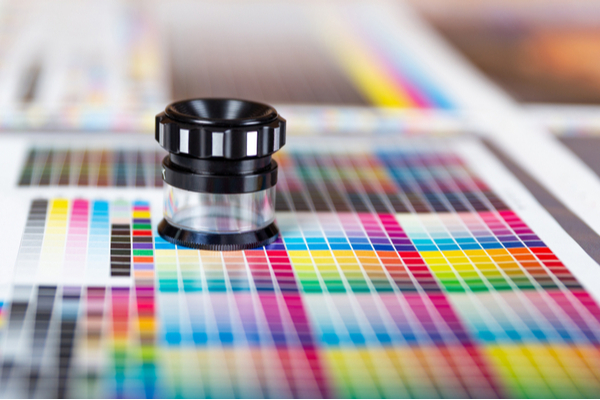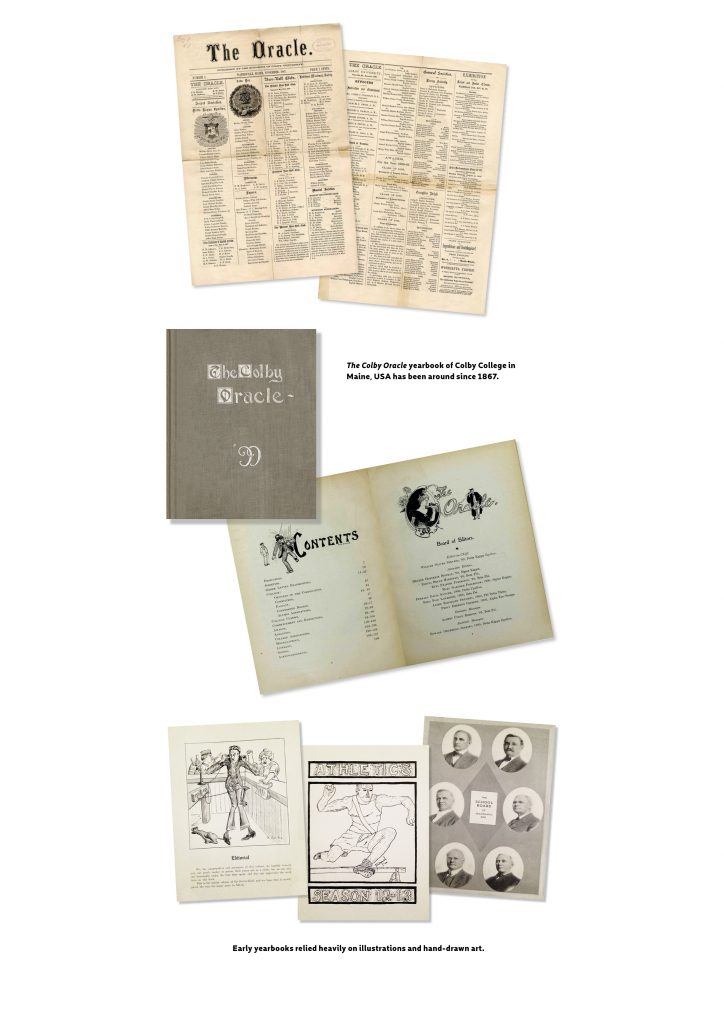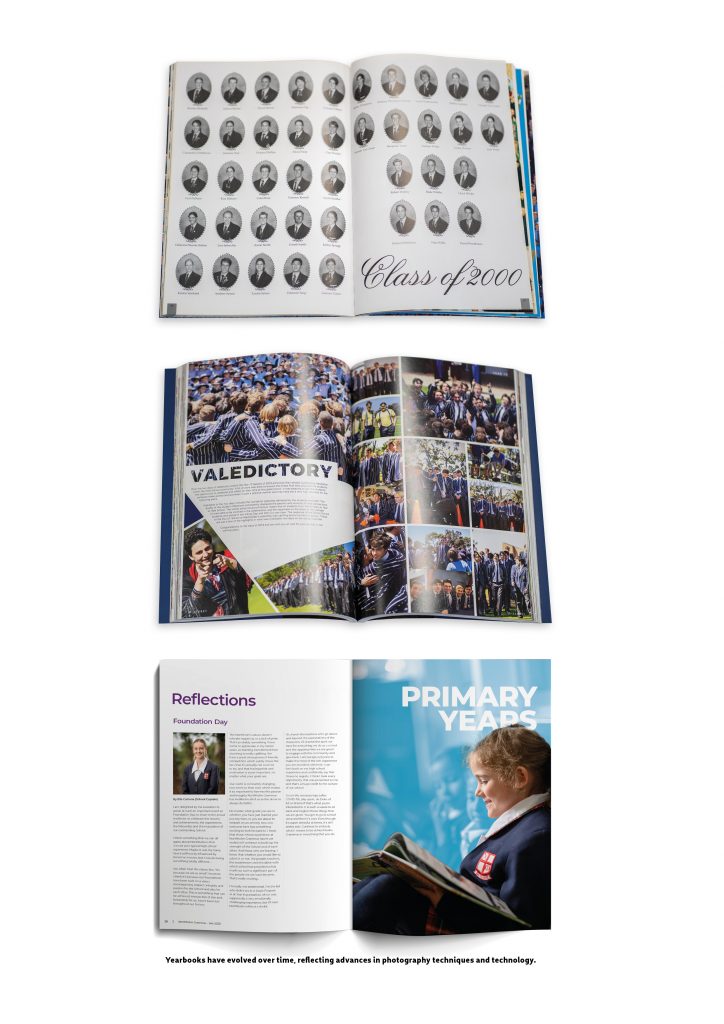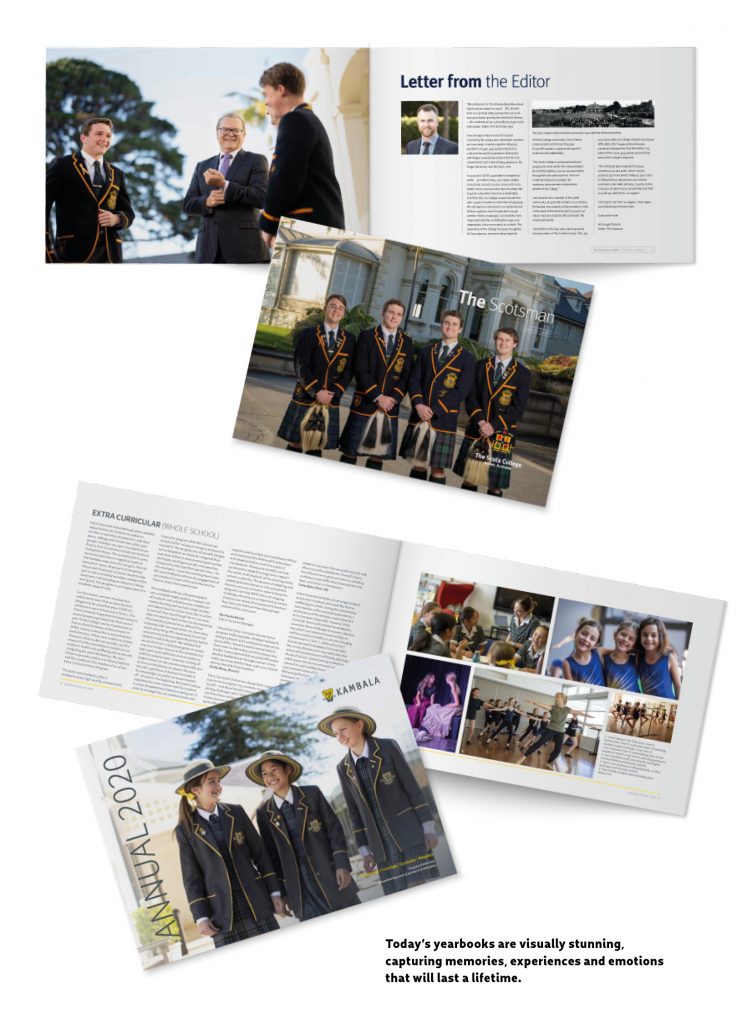Do yearbooks have a place in an increasingly online world? The answer is a resounding yes!
More than a memento, souvenir or fleeting online experience, a yearbook is a powerful time capsule. It captures memories and emotions, providing a lifelong means of travelling back in time.
Yearbooks remind us of who we were at a particular point in our lives and show us how we — and our world — have changed. They are important archival documents for schools, capturing each year’s events, experiences and community.
History
The first proper yearbooks appeared nearly 400 years ago, with the early versions being very simple scrapbooks. With photography not even on the horizon for another 200 years, the books were filled with notes, articles, flowers and sometimes even hair to memorialise events.
The ‘Signa’ from the graduating class of Massachusetts in 1823 is thought to be the oldest college yearbook still in existence and the oldest high school yearbook goes to ‘The Cue’ in 1814 from Albany Academy in New York. Posed photos and engraved illustrations feature but the cost to students and families was expensive. These yearbooks only featured seniors and/or the graduating class opposed to the majority of students and the vast array of extracurricular activities for students.
Today’s yearbooks continue to evolve with advances that make the most of the latest and greatest software, designs and technologies available, making it a very valuable tool in your marketing toolbox.
Evolution
In many ways, a yearbook is like its own photograph — a snapshot in time that will remain forever unchanged. In a world that is forever changing, this is a tradition that people hold onto and treasure, regardless of the lack of immediate interactive communication that we are now so accustomed to. For today’s generation of digital natives, the yearbook may seem as old‑fashioned as the horse and cart. Yet it is the unchanging nature of yearbooks that remains their primary appeal.
Social media is about what is happening now; yearbooks are reminders of what has happened in the past. They are created with time, care, thought and purpose. They are created to last. You know that the next time you leaf through its pages, even if it is 20 years from now, the same pictures will still be there. Websites and digital devices come and go, and there are no guarantees the technology required to create a virtual yearbook today won’t be obsolete in 20 years’ time, just as the floppy disk is today. There is also something about the tangibility of holding it in your hands that connects you emotionally to the memories it holds.
Today’s yearbooks document school life in a more dynamic and inclusive way than ever before. For a long time, the yearbook has served as little more than a repository of posed photos of a few select groups. While these are still invaluable parts of the whole, the greater focus now is on including a broad range of photos that show a diversity of activities across the whole student body — to ultimately tell the story of the school throughout the year.
They feature sections dedicated to different departments and accomplishments such as music, athletics, drama, academics and community service. More than just a photo and a caption, coverage now includes interviews, reports, artwork and creative writing. Great coverage is what allows a yearbook to truly serve as a memory book.
Purpose
More than a memory book, a yearbook promotes a sense of school pride and unity. Emblazoned with the school crest and colours, it reminds all who read it of a shared purpose. Students take great pride in seeing themselves in the yearbook and showing it to their family and friends. Most students get theirs signed by peers and teachers, which personalises it and makes it unique to each individual. Looking back at the yearbook is entertaining and evocative at school reunions, bonding people in a way that transports them right back to their schooldays.
Finally, a yearbook provides a visual and physical representation of a family’s investment in their child’s education, highlighting the ways in which you have delivered on your brand promise. In this year of COVID-19, it may be more important than ever to showcase what your school and students were able to achieve when the world seemed to stop.
How to make your yearbook great
- Plan ahead. Know when every school event is throughout the year and ensure it is covered (including photos).
- Make a schedule. Catalogue the year of events and set goals for each day, week and month to ensure you stay on top of the process.
- More is more. The more material you have, the more options you will have.
- Invest in professional photography – don’t underestimate the power of strong imagery. For insights into why and how to do this well, see our photography case study.
- Reflect the experiences of as many students as possible. The yearbook should be a representation of the entire student body.
- Be honest, thorough and accurate. Check and recheck everything thoroughly; spelling, grammar and layout mistakes will be noticed. The fewer mistakes there are, the more professional — and more of a keepsake — the yearbook will be.
Snapchats won’t last a lifetime … but a yearbook will.









